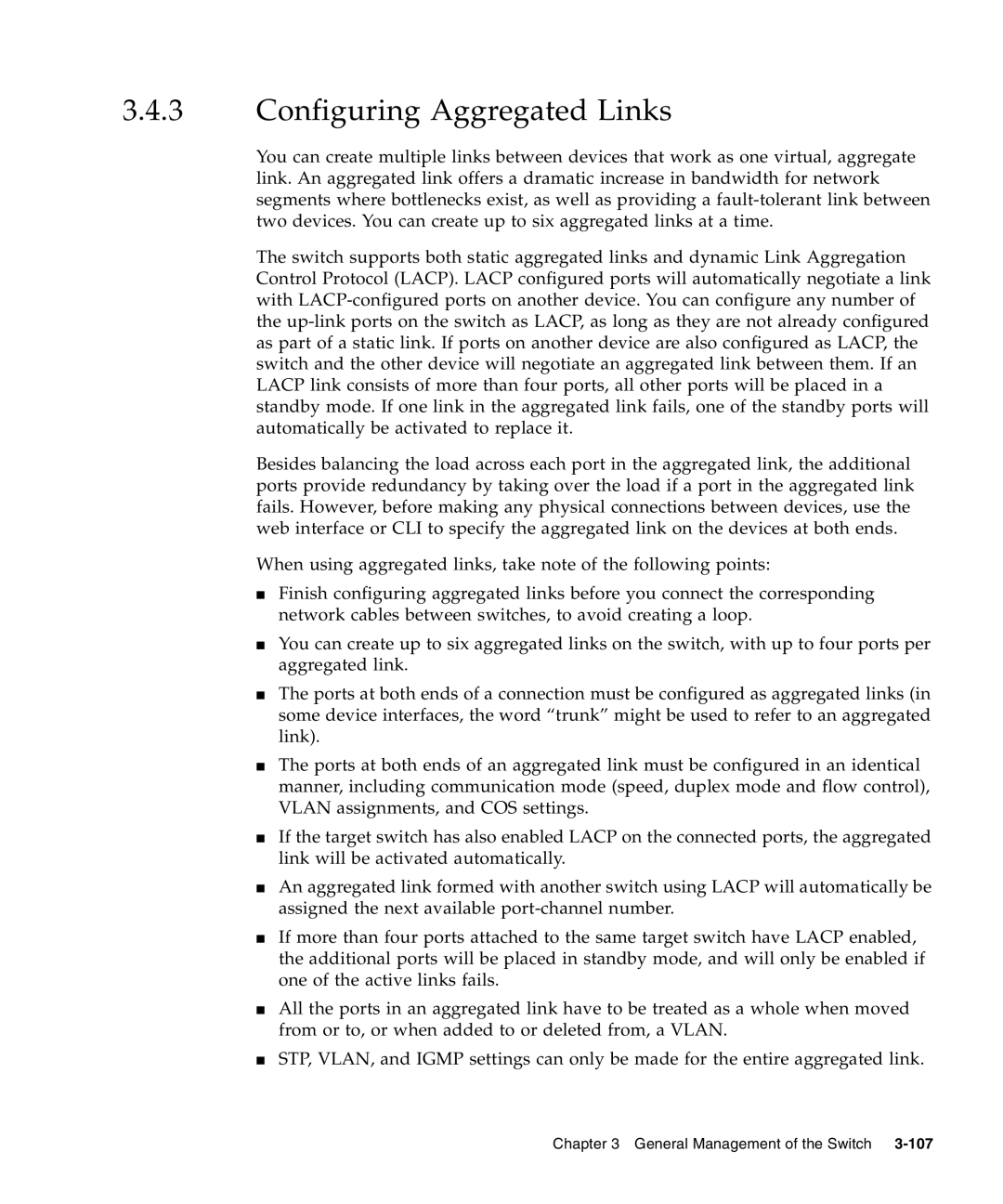3.4.3Configuring Aggregated Links
You can create multiple links between devices that work as one virtual, aggregate link. An aggregated link offers a dramatic increase in bandwidth for network segments where bottlenecks exist, as well as providing a
The switch supports both static aggregated links and dynamic Link Aggregation Control Protocol (LACP). LACP configured ports will automatically negotiate a link with
Besides balancing the load across each port in the aggregated link, the additional ports provide redundancy by taking over the load if a port in the aggregated link fails. However, before making any physical connections between devices, use the web interface or CLI to specify the aggregated link on the devices at both ends.
When using aggregated links, take note of the following points:
■Finish configuring aggregated links before you connect the corresponding network cables between switches, to avoid creating a loop.
■You can create up to six aggregated links on the switch, with up to four ports per aggregated link.
■The ports at both ends of a connection must be configured as aggregated links (in some device interfaces, the word “trunk” might be used to refer to an aggregated link).
■The ports at both ends of an aggregated link must be configured in an identical manner, including communication mode (speed, duplex mode and flow control), VLAN assignments, and COS settings.
■If the target switch has also enabled LACP on the connected ports, the aggregated link will be activated automatically.
■An aggregated link formed with another switch using LACP will automatically be assigned the next available
■If more than four ports attached to the same target switch have LACP enabled, the additional ports will be placed in standby mode, and will only be enabled if one of the active links fails.
■All the ports in an aggregated link have to be treated as a whole when moved from or to, or when added to or deleted from, a VLAN.
■STP, VLAN, and IGMP settings can only be made for the entire aggregated link.
